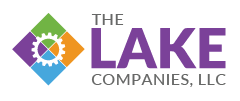Wisconsin Manufacturers Reap the Benefits of ERP Automation

There are a ton of benefits being realized by Wisconsin manufacturers who prudently opted to transition to an ERP system. For example, consider those companies who set a priority to go paperless.
Digital Document Management
A good document management system eliminates the need for paper processing. Gone are the days of a sluggish, endless procession of documents, moving at snail-speed, back-and-forth between departments, needing this signature or that stamp, or copies of copies, finally to make their way to a file cabinet in some far away warehouse to be held in perpetuity.
Enjoying lightning-fast speed, this digital technology can track, manage, store and retrieve documents all while taking a company’s paper document dependency down to near zero. Companies that employ digital document management leave manual paper handling to their laggard competitors.
Mortara Instrument Inc., a Milwaukee company that makes medical devices for diagnostic cardiology and patient monitoring (now part of Hill-Rom Holdings Inc) pounced on the benefits of going paperless. In his SyteLineCon 2016 presentation, John Duren, Senior Vice President Operations at Mortara talked about the paper monster that was plaguing Mortara.
To give you an idea of the paper processes that were taking over Mortara, we would print out over 100,000 pages of paper per year for this process. That’s twelve pallets of banker’s storage boxes. If we double in size that would be 200,000 pages per year.
Duren explains that government compliance requires that documents must be accessible. The biggest concern is those records have to stay around forever,
Duren said. We have to keep them 20 years beyond the expected life of the device. Our devices last anywhere from 7-10 years, so effectively we are keeping the records forever.
In addition, when you manufacture a medical device, you have to create what’s called a Device History Record. This document basically tells anyone everything that has ever happened with the device: what components went into it, who the operators were, the serial number, and much more.
Duren went on to say, So we were maintaining two pathways. That form [device history record] had to be printed on a completely separate system where we’d record job information. We had manual signatures and approvals on that. QA would have to review every one of those before we could ship a unit. Finally we’d have to scan it and file it away for future years. Again, a very onerous process. Part of what we review is that nobody missed a signature. There’s huge opportunity for errors here, and we decided that there had to be a better way.
As Mortara continued to grow, they considered several options:
- The first was not to do anything. They could continue to grow, add more employees and standards, and thus more copiers.
- The second option was to find a better way to scan the documents to make the process easier.
- The third option, which they ended up moving forward with, was to figure out how they could fundamentally change the process and eliminate the paper and all of the manual operations that went along with it.
Their happy ending… Mortara contacted The Lake Companies and began working with Doc-Trak™, a best case scenario in digital document management systems.
The bottom line for Mortara
- Mortara Instrument had a 25% reduction of indirect labor required of moving units into stock.
- Duren said,
Time savings is about a minute per unit. Putting that into context, we do about 3,500 units per month. So there’s 3,500 minutes a month.
- Mortara also had an 80% reduction in direct labor on the manufacturing line to complete signatures and validations. That eliminated about 5 minutes per unit.
It is all about making your manufacturing company more efficient.

